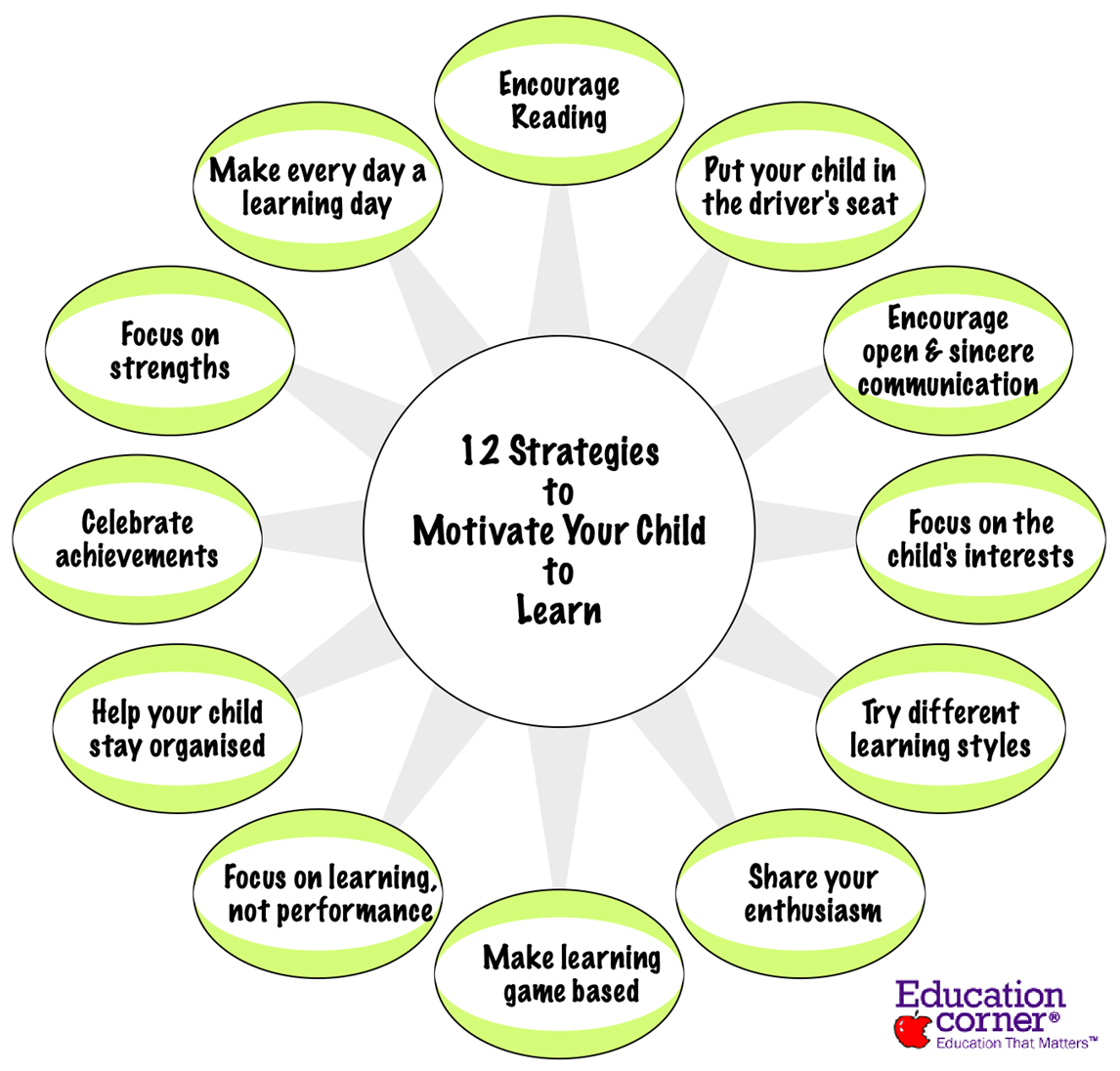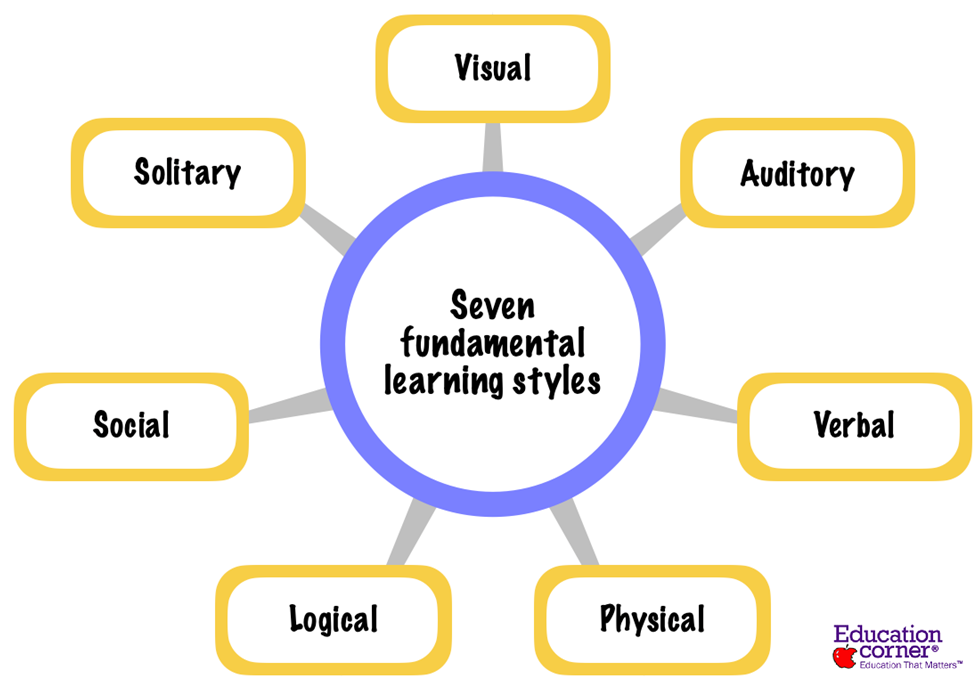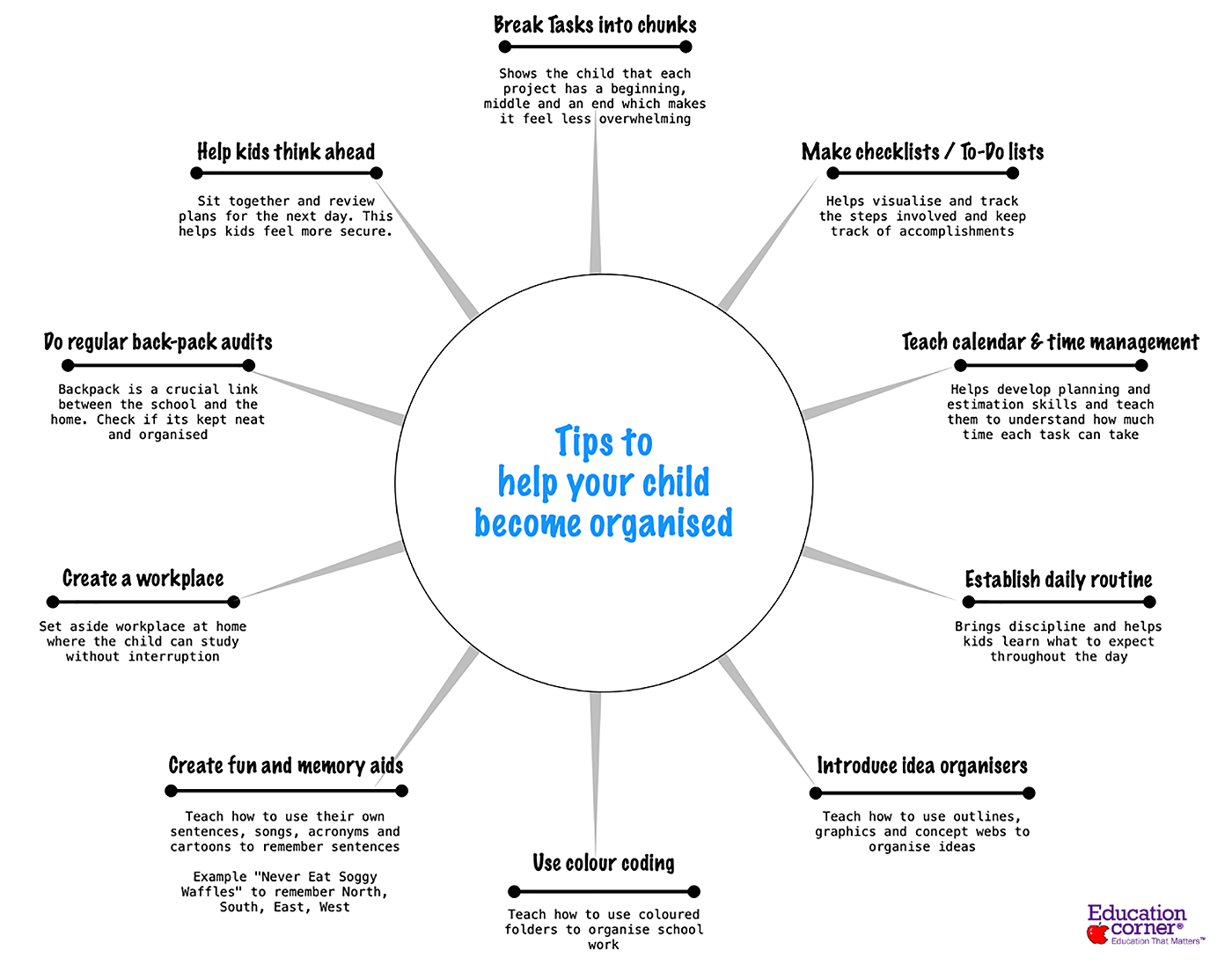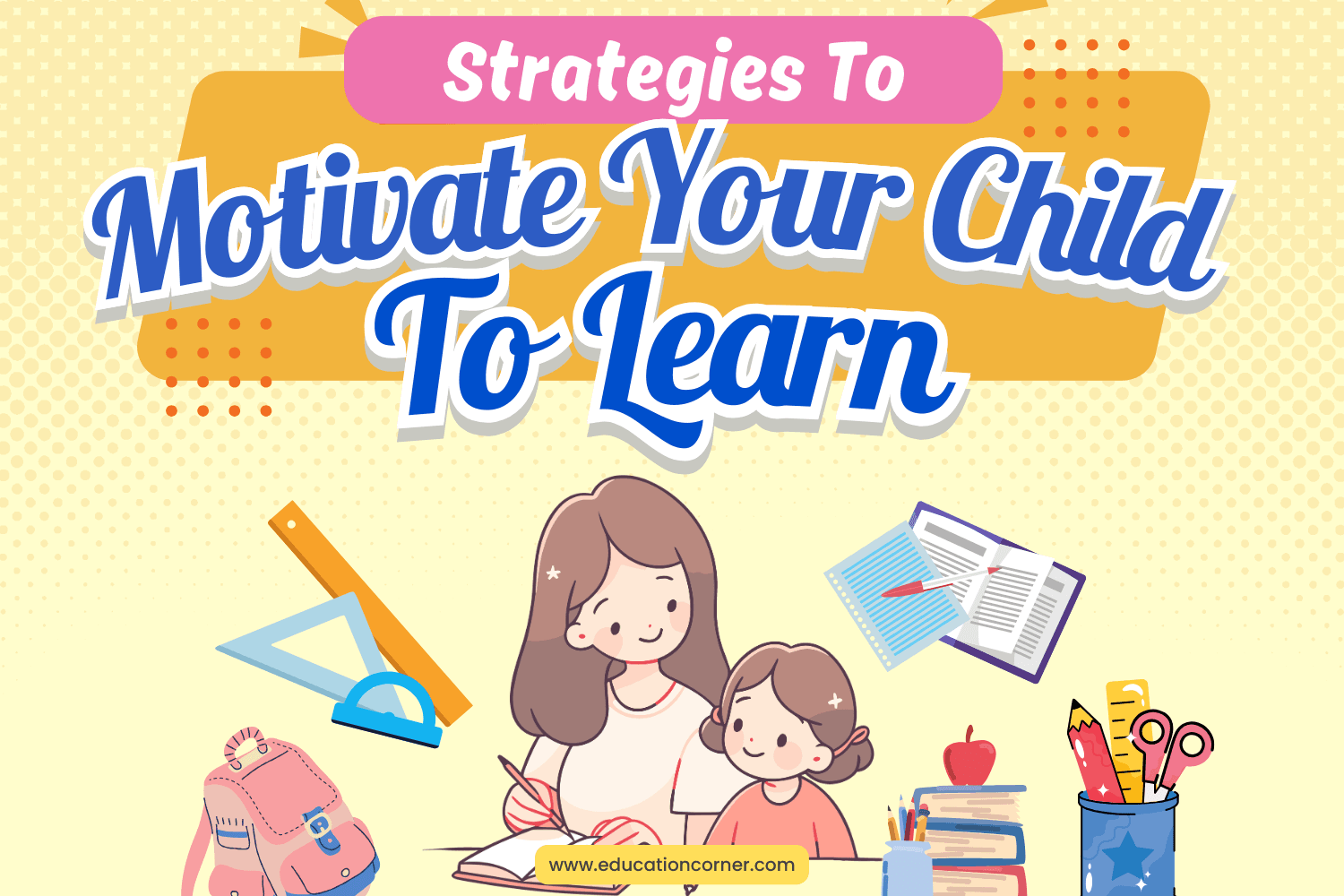Most students who excel in their studies are not necessarily born with a natural learning ability. While one’s personality and overall disposition influence the attitude toward learning, every successful learner must develop effective learning habits at some point.
Any student with the basic aptitude and the right motivation can become a good learner.
One of the biggest mistakes teachers and parents can make when it comes to developing students as good learners is to limit learning to the classroom.
While the classroom will remain the primary source of instruction, a child’s intellectual, social, and academic growth should extend beyond the classroom walls if you want to truly enhance a child’s desire and ability to learn.
This article explores some of the proven strategies for motivating children and encouraging them to learn. Implementing them will help your child or student discover the joy of learning.

1. Develop an atmosphere that encourages reading
According to Dr Andrea Netten, director of IEA Amsterdam, success at reading leads to the joy of books, which in turn improves academic performance.
A long-term study by the Annie E. Casey Foundation found students who were not proficient in reading by the end of third grade were four times more likely to drop out of high school. Conversely, children who developed an early love for reading improved their learning ability.
Clearly, the ability to read well is the key to learning well. Developing reading ability early is important because it helps children build vocabulary and develops their brains to process concepts and formal communication.
Studies show that students who read well develop enhanced learning abilities in all subjects, including technical subjects such as math and science.
Whether your child is a keen or reluctant reader, you can play a crucial role in developing your child’s reading skills as a parent. Here are some tips:
- Connect reading with hobbies and interests. Children tend to lose interest when reading becomes associated only with exams and academic pressure. By linking it to a child’s hobbies or interests, parents can make reading an enjoyable experience.
Find out what your child is excited about. It could be novels, posters, newspapers, or magazines. Encourage them to read something about their area of interest. Don’t try to force–that’s a sure way to associate reading with pressure. - Have a fixed reading time. Create a family reading time where everyone focuses on reading for 20 minutes daily.
- Allow different formats. Reading is a habit, and as long as they pick up something to read, it doesn’t matter what or how they read. Like print books, eBooks can help children learn and develop social, listening, and thinking skills.
- Take your child to live author events. It can be exciting and interesting for young readers to watch an event with one of their favorite authors. Such events give young readers an insight into the author’s thoughts when they wrote a book.
- Look for books based on films and games. Young people find it challenging to select texts. Knowing which genre or type of book they would enjoy can be hard. If your child has a favorite film, game, or television show, look for books based on those.
- Use reading apps. Today, kids have more resources available than ever before to help them learn the important skill of reading. Reading apps can help your child develop a sense of enjoyment when it comes to reading.
- Encourage reading as a social activity. Many believe reading is a solo activity, but it can also be a social activity. Let your child see you reading and talking about what you are reading. Have them participate in read-aloud events.
As a parent, you must create conditions that encourage children to read. Let children pick their own books. Help them read and create activities for them that make reading fun.
2. Put your child in the driver’s seat
A child’s educational experience is often marked by control. This can stifle creativity, limit curiosity, and ultimately hinder their learning ability. When children feel controlled, they often withdraw from learning.
While guiding a child through the learning process is important, allowing them to control their learning experience is just as crucial. Children must feel they have a say in their learning choices, whether at home or in the classroom.
Providing them with options is a good way to do this. For example, when assigning a writing project, allow children to choose their topic. They could also choose their own extracurricular activities.
The more control and input children have in their learning, activities, and style, the more engaged and motivated they become.
3. Encourage open and sincere communication
Adults need to foster a healthy bond with their children. A huge part of nurturing such a bond is the conversations you’ll have with the child — whether it’s simple homework help or a more difficult topic, it’s important to be open and honest.
Not only does this affect a child’s learning, but also the overall development.
By being open and honest, you encourage your child to do the same. You signal that they can freely discuss their thoughts and feelings with you. So, if a child is dealing with a problem at school or negative emotions, they’ll be more likely to open up and share their likes, dislikes, or concerns about their education.
And when they do, validate their feelings—even if you disagree. Feeling unheard or stuck may cause your child to disengage from the learning process. Good learners know their opinions matter and feel reassured that they can be open about their educational experience without being judged, put down, discouraged, or ignored.
4. Focus on your child’s interests
Whether it’s academics, sports, or more creative hobbies, it’s a positive sign when a child shows an interest in—and even an aptitude for—something. Children learn best when they are interested and engaged.
Several studies suggest that students who work on interesting, “compared to neutral materials” tend to engage in deeper and higher-level cognitive processing, employ more imagery, and experience positive feelings and excitement.
Attempting to teach young children without acknowledging their interests and prior experiences can frustrate everyone and lead to missed learning opportunities. To help your child become a good learner, encourage them to explore fascinating topics and subjects.
For example, if your child is interested in dinosaurs, you can help them find interesting books and stories about these ancient creatures. Then, you can challenge your child to identify their five favorite dinosaurs and explain why they chose each one.
5. Introduce and encourage different types of learning styles
Each child can have different learning preferences and styles best suited to their way of learning. For instance, some could be visual learners, while others could be auditory learners. Some may learn through reading/writing, while others may learn by doing (kinesthetic).
Some have a single dominant learning style, while others use a mix of styles. As shown, there are seven fundamental learning styles, which are discussed in more detail in our dedicated article.

While there isn’t necessarily one right or wrong learning style (or the right mix), knowing a child’s learning style helps use the techniques to improve the learning rate and quality.
For example, children who are visual learners learn best by seeing how things work. Conversely, children who are auditory learners learn best by listening to things being explained.
It’s beneficial for young children to explore and employ different learning styles to discover their preferred learning method.
6. Share your enthusiasm for learning
Enthusiasm rubs off, especially when it comes to learning. Research has shown that enthusiasm has positive effects on students’ attitudes.
For example, several experiments have documented how enthusiastic teachers can instill greater intrinsic motivation, enjoyment, and vitality in students and increase the time they spend on learning tasks.
If your child or student notices you’re enthusiastic about something, they will likely become enthusiastic about it, too.
When helping your child learn, use a lively and motivating style that includes a range of behaviors, such as varied gestures, body movements, facial expressions, voice intonations, and humor, that help convey your interest in the subject.
Whether history, science, reading, writing, or even math, help the child see that learning is a journey of exciting new discoveries. Take every opportunity to discover new information with the child without being overwhelming or overbearing.
As your child sees the joy and excitement learning brings to your life, they will also begin to share your enthusiasm for learning new things.
7. Make learning fun through game-based learning
Game-based learning has been around for a long time and can be advantageous for many reasons when used as an educational tool. It provides opportunities for deeper learning, develops a child’s non-cognitive skills (such as social and emotional skills, persistence, and resilience), and motivates them to learn.
Here are some ways in which game-based learning can help young children:
- Enhance critical thinking: games require children to think critically, make decisions, and solve problems, which develops reasoning skills and thinking ability.
- Develop social and emotional skills: collaborative games help children develop skills like cooperation, teamwork, self-control, and self-awareness, which are crucial for social-emotional learning.
- Improve memory: games involve memorizing sequences or rules that strengthen children’s memory skills as they play repeatedly.
- Provide a safe environment for failure: games allow children to fail without real risks, encouraging them to keep trying until they succeed. This helps develop resilience and perseverance.
- Boost motivation and engagement: engaging in games with choices, collaboration, and feedback keeps children motivated to learn and achieve goals.
- Support different learning styles: game-based learning caters to various learning styles, making it effective for children who learn best through interactive and engaging activities.
- Build digital literacy: in an increasingly digital world, game-based learning helps children become familiar with technology early on, enhancing their digital literacy skills for the future.
Game-based learning is a great way for parents and teachers to introduce new ideas, grammar, concepts, and knowledge in a way that motivates children to learn. UNICEF’s list of play-based learning activities for children aged 3 to 10 is a good place to start for young learners.
8. Focus on learning, not performance
One of the downsides of the American education system (and most other countries) is an obsession with grades. Students worry about them. Parents worry about them. Teachers worry about them.
While grades encourage comparison and competition among students, they can harm relationships with peers and teachers, lead to anxiety, and negatively influence learning.
When students are mainly motivated by good grades, they tend to focus on memorizing information instead of deeply understanding new concepts, establishing connections, and making creative extensions. This can lead to a lack of creativity and discourage young learners from exploring new ideas and making their own discoveries.
Focus on what your child is learning instead of how he is performing. For instance, instead of asking your child how they did on their math test when they get home from school, have them teach you what they learned in math.
While performance is important, focusing on the learning experience will communicate to the child that actual learning is more important than grades. It also shows that you are more concerned about your child than his performance.
9. Help your child stay organized
Young school-age children often struggle with disorganization, leading to feelings of being overwhelmed. This can hinder their learning as they spend more time being frustrated and worried.
Helping your child organize their papers, books, and assignments will go a long way toward motivating them to learn. Here are tips to help children improve organization skills at home, at school, and beyond:

10. Recognize and celebrate achievements
No matter how small your child’s accomplishments may seem, it is important to recognize and celebrate them. This is particularly important for elementary-age children, who require constant positive reinforcement to stay motivated to learn and challenge themselves to improve.
A child’s tiny triumphs are the building blocks of responsibility and character. So, when these moments happen, don’t let them pass by unnoticed. Turn them into mini celebrations. You’ll be amazed at how these ‘tiny triumphs’ can lead to big changes in the future.
We’re not suggesting that you praise mediocrity but offer recognition and celebrate your child’s achievements. For instance, finishing a difficult project deserves a special treat, and doing well on a math test could call for a trip to get ice cream.
These early celebrations go a long way toward teaching the child the value of hard work, boosting their confidence, and improving their ability to set goals. They also help strengthen relationships.
11. Focus on strengths
It’s common to notice the bad first, even when there are good things to focus on. For instance, if your child gets four As and one D on their report card, your eyes quickly skim over the ‘A’s and automatically focus on the D.
Excessively emphasizing your child’s weaknesses can lead to discouragement, distress, and a lack of motivation to learn.
We tend to focus on the negatives because it’s how our earliest ancestors survived: always on the alert for signs of danger. Even though we no longer must be on the constant lookout for trouble, we still lean toward negativity, and this extends into parenting.
According to Lea Waters, a professor of positive psychology at the University of Melbourne in Australia, paying attention to and boosting a child’s strengths rather than focusing on the negative can lead to greater optimism, resiliency, and success.
Focusing on strengths can be difficult, particularly when a child struggles with so much academically. But focusing on the positives doesn’t mean ignoring weaknesses—it’s not an either-or approach. It’s about acknowledging and appreciating the strengths before you address the weaknesses.
For instance, if Johnny fails his math test, in addition to getting him a little extra help with his math, make sure to congratulate him for how well he’s doing in science class.
Focusing on strengths is vital to healthy emotional and academic development and is a form of positive reinforcement important to maintaining learning motivation.
12. Make every day a learning day
Turning every day into a learning day isn’t difficult with the right approach. It begins with simple things like encouraging your child to explore the world around them, asking questions, and helping them make connections.
Learning can also be incorporated into everyday activities such as playing games, cooking, taking walks, writing, reading, coloring, drawing, painting, and gardening. Replacing videos with educational apps that encourage learning can make screen time more beneficial.
Help your child categorize, classify, and think critically about what they see and experience. Turning every day into a learning day will help children develop internal motivation to learn, whether in the classroom, at home, or wherever they may be.


Thank you for the great ideas to motivating our students. As a 5th grade teacher I am always looking for ways to encourage students to read. By focusing on their strengths and creating a personal link with them, they are motivated to complete work and read. Celebrating with them and focusing on their learning shows that you care and thus they care too.